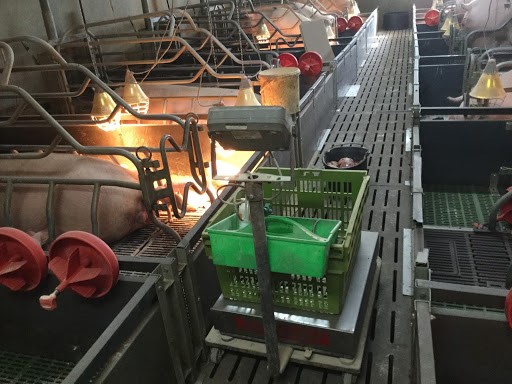- Home
- EU PiG – Implementing KALINAT approach to fully promote the hyperprolificacy of sows
EU PiG – Implementing KALINAT approach to fully promote the hyperprolificacy of sows
The increase in pigs born per sow (hyperprolific sows) has caused various production issues relating to ensuring that the piglets have the best chance of survival and being profitable animals.
Ambassador: Corentin Nevannen, Eureden Cooperative, France
Publication date: July 2020
Theme: Animal welfare
Challenges: Strategies for dealing with piglets from hyperprolific sows
The body condition score (BCS) of the sow has been shown through substantial research to directly impact the survivability and variability of the litter of piglets, i.e. sows with a good BCS entering subsequent lactations provide good litters of piglets and those that do not have a good BCS do not.
The benefits and costs of using the KALINAT approach
Benefits:
- 180 g increase in the average birth weight of piglets from sows with a low Kalinat index
- Reduction of the rate of losses on liveborns by 2.6%
- The proportion of sows with a low Kalinat index decreased from 24% to 19%
- An increase of one pig produced/sow/year, i.e. a positive change in gross margin of €24,000 at the farm level (360 sows present)
(Changes between 2017 and 2019 data)
Based on these assumptions, variable production costs after the implementation of best practice decreased by 2.3% per piglet, mainly due to the higher piglet production per sow per year. A decrease was also observed in the case of fixed costs by 2.8% per piglet. As a result, the total costs were lower by 2.4%.
Costs:
-
For someone not already using the practice, suitable weighing systems at birth that allow weights to be gathered as part of routine birth management tasks would need to be purchased – approx. €10,000
Improving piglet quality and sow prolificacy with Kalinat index
For both sow prolificacy (pigs born per litter) and parity, an average piglet weight to target is calculated in order to guarantee the maximum survival of piglets. This target average weight comes from a huge database of farmers working with Cooperative Eureden, who have weighed all the piglets at birth for several years. The farmer records the piglet’s average birth weight of each sow and calculates the ratio between this value and a target weight based on best practice. This ratio is called the Kalinat index. A Kalinat index over 1 indicates a good-quality birth piglet. The farmer had some sows (24%) with a bad Kalinat index, so after weaning, he gathered these sows and increased the quantity of feed during the gestation period and until birth.
Weighing of litters at birth is integrated into the usual care practices and does not take more time, except for the notation of the weight on the sow card. The farmer also identifies by colour pencil the smallest piglets to reinforce their monitoring during the lactation period.
"With the KALINAT method, I optimise the potential of my sows and I prepare the future career of my piglets." Corentin Nevannen
Case studies
Technical reports
 EU PiG
EU PiG
Another example of a piglet care trolley with a built-in scale for litter weighing.
Animal welfare best practice challenges
Strategies to reduce aggression between animals
The quality of the farm atmosphere
Contact us
To access more information, contact RPIG (France): Fabien Verliat or EUPig@ahdb.org.uk
This project has received funding from the European Union`s Horizon 2020 research and innovation programme under grant agreement No 727933.
 Government logo
Government logo

